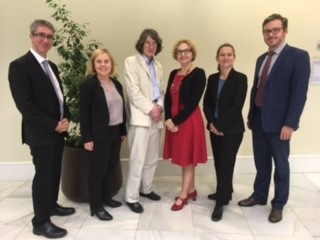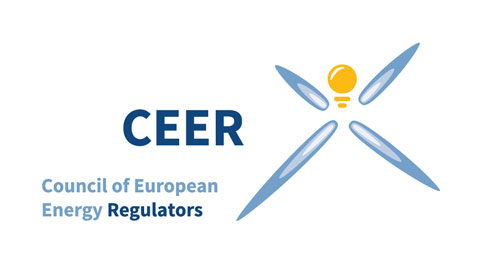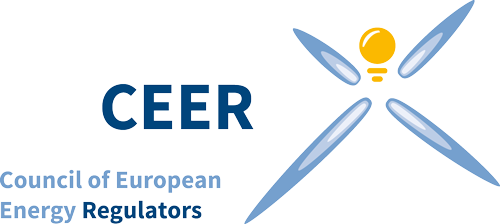October 2017

Editorial

We are pleased to announce the new CEER leadership team. Garrett Blaney (IE) is the new CEER President. He is joined on the CEER Board by 5 CEER Vice Presidents: Anne Vadasz-Nilsson (SE), Annegret Groebel (DE), Marie-Pierre Fauconnier (BE), Helene Gassin (FR) and Martin Šik (CZ).
The feature (below) this month is on our new CEER Power Losses Report. We also published a CEER Clean Energy White Paper on Regional Regulatory Oversight.
Out now is the ACER-CEER Annual Report on the Results of Monitoring the Internal Electricity and Gas Markets in 2016. Containing data, findings and recommendations, this detailed “Market Monitoring Report” (MMR) comprises four volumes on electricity wholesale, gas wholesale, retail and customer protection and empowerment. No time to read the full report? Read the MMR summary, presentations and Press Release. Also check out the national country reports.
What else is coming up?
- Don’t miss the CEER Customer Conference (28 Nov.) Empowering Clean Energy Self-Consumers and Energy Communities. Register here.
- Last chance also for the few remaining places for our REMIT training course (6 Nov) and for the EFET training on Wholesale Power and Gas Market Trading (7 Nov).
- Mark your diaries (20-23 March, 2018) for the World Forum on Energy Regulation in Cancun, Mexico.
CEER Report on Power Losses
The new CEER Power Losses Report presents data on network losses in Europe and sets out regulators’ recommendations to better benchmark and reduce losses.
What are Power Losses?
Power losses are an inevitable consequence of transporting electricity across the power grid. Losses can be technical and non-technical, and occur at distribution and transmission levels. Technical losses refer to energy converted to heat in power lines and transformers, resulting from the laws of physics. While all countries in the CEER study include the technical losses in their reported losses, there are many practices when it comes to non-technical losses. For example, CEER found that, depending on the country, non-technical may (or may not) include hidden losses, theft, non-metered consumption and other losses.
What’s in the CEER Report on Power Losses?
Packed with key data such as the amount of (technical and non-technical) losses, losses in transmission and distribution systems, the report is an invaluable resource for assessing Europe’s network losses and their regulatory treatment (e.g.it also includes case studies on how the cost of losses is covered).
Main Findings
CEER found that the cost of losses is in most cases passed onto consumers.
- Stable level of network losses and lack of harmonised data
CEER found that network losses overall were stable in the years 2010-2015, but vary from year to year. In 2015, transmission power losses (as a proportion of total energy injected) ranged from 0.89% and 2.77% across the surveyed countries. In comparison, total losses (transmission and distribution) ranged between 2.24% and 10.44%.
The lack of harmonised rules and definitions of network losses makes country comparisons difficult, and this report highlights this as an initial benchmarking issue. This is particularly true for non-technical losses (energy delivered and consumed but not billed), which some countries do not even report.
- Smart metering has the potential to reduce power losses
Smart meters would mostly like reduce non-technical losses, via prevention of theft and more-accurate consumption reading. The report found that distributed generation (such as solar or wind farms) close to areas of consumption tends to reduce losses, while those located far from areas of consumption tends to increase losses.
Main Recommendations
The report contains a set of recommendations for good practices to reduce technical and non-technical losses. In particular CEER recommends:
- harmonising definitions of losses so as to improve benchmarking across Europe a
- incentivising network operators to reduce technical and non-technical losses
- Overall
- Harmonise definitions for improved benchmarking
- Make more data available, such as the availability of energy injected into distribution grids, which would permit the calculation of distribution system losses as a percentage of energy injected into distribution grids
- Incentivise system operators to reduce losses instead of passing losses on to consumers
- Employ a life cycle costing approach that includes losses when making investment decisions
- Technical Losses
- Increase voltage levels
- Apply less transformational steps to deliver electricity to consumers
- Utilise new and improved equipment
- Employ distributed generation in a more efficient manner, including combining it with local storage
- Optimise network flows – reduce peaking
- In general, pursue network architecture and management that promote the highest efficiency
- Non-Technical Losses
- All countries should collect data on these types of losses
- Focus on more accurate recording of electricity consumptions through improved metering and the use of smart meters
- Reduce theft and other hidden losses
Public Consultations and Events
Visit our website for our future consultations and events.
- 28 November, 2017. CEER Annual Customer Conference
Publications
Reports and Papers
- ACER-CEER Annual Report on the Results of Monitoring the Internal Electricity and Gas Markets in 2016
- CEER Clean Energy Regulatory White Paper:Regional Regulatory Oversight
- CEER Power Losses Report
- PR-17-09 Households and businesses benefit from falling EU energy prices (2017-10-24)
- PR-17-08 CEER elects its Vice Presidents (2017-10-19)
- PR-17-07 CEER Power Losses Report advocates incentives for network operators to reduce network losses (2017-10-18)
International
The next World Forum, an international energy regulatory conference held every 3 years, will be in Cancun, Mexico (20-23 March).
Contact
Tel: +322 788 7330 or
+ 32 484 668 599

